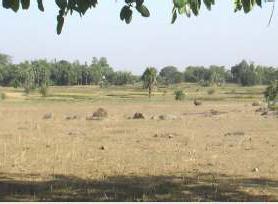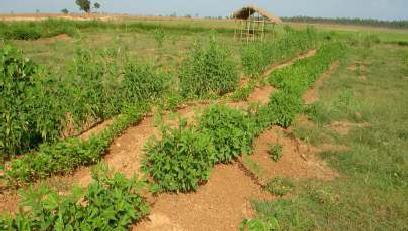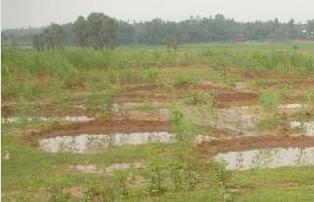Forest of Hope
Forest of Hope

Village Narayanpur of Rajnagar Block in Birbhum of West Bengal, where even dogs are afraid to travel long distances during summer due to dried fallow land without a single tree to rest under a shade. Narayanpur Sishu Samity (NSS) was formed in January 2008. It took control over 40 acre of fallow land with red lateritic soil permanently rejected as uncultivable. Before that it was utilized as a land for grazing livestock. NSS organized a group consisting of 12 landless and 4 marginal farmers, most of them tribals. In a bid to regenerate the fallow as a permanent asset for the village, they planted fruit, fodder, firewood trees and grew shortterm seasonal crops as an intercrop.

The agreement with the owner of the fallow over which the activity was made was — 50% of the sale proceeds of the mature tree would go to the owner and the balance would be the share of the protecting group. The intercrop would be shared equally among the group members. The group started their work in April 2008 by raising seedlings in the nursery. 36 tree species were selected by applying the participatory tool called Social Analysis System (SAS). Out of a total 26000 saplings, 19150 saplings were planted, 4000 sold and the rest were distributed among the local people.

By the next rainy season, this soil water conservation initiative improved soil health. Grass and weeds started growing naturally. Trenches around the plot with 4 ridges, 50 semi-circular bunds and 5 stone bunds were made. The work generated 1342 mandays. The work was started with planting intermediate crops like maize, bottle gourd, kidney bean etc. and long term crops like pigeon pea, sabai grass, roselle etc. Pond slime, compost and neem cakes were applied in the field as fertilizer. For protection, living fence was created with palm, date palm, pigeon pea, roselle etc. Social protection was also organized by the members in turn. The end of Khaif season saw harvest of 150 kg of vegetable, 15 kg maize, 200 kg roselle and 250 kg of fodder, which were mostly used by the families. Some weeds and grass brought some extra income as raw materials for producing handicrafts and medicine.
The initial investment was about Rs.2.5 lakh, including 30% local contribution in terms of labour. 16 families, on an average, got 155 days of work. Seasonal crops fulfilled the basic vegetable needs of the families. A good quantity of fodder could be produced. Near-extinct trees could be regenerated which increased biodiversity. Income generation possibilities could be created through broom making, roselle jam making. People from 3-4 adjacent villages got interested in undertaking similar activity in their village.
The activity was supported by Christian Aid.
Source : DRCSC news, Issue No. 3
Last Modified : 3/1/2020
Provides information about Surakshit Hum Surakshit...
